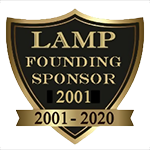eMoviePoster.com
Auction History Result 4w072 JOHN WAYNE linen Belgian '40s wonderful close artwork image of the legendary cowboy star! Date Sold 9/13/2011Sold For: Login or Register to see sold price. An Original Vintage Theatrical Linenbacked Belgian Movie Poster (measures 11 1/4" x 16 1/4") (Learn More) John Wayne was born Marion Robert Morrison in Winterset, Iowa in 1907, but his parents soon decided they wanted Robert for their next son's name, and changed his middle name to Mitchell (one wonders if he would have been as big a star as "Marion Mitchell Morrison"!). His family moved to Glendale, California in 1911, and there he had a huge dog named Duke, and people started calling him that as well (and the nickname stuck, and he would later name his movie horse that, and eventually everyone would refer to him that way). He went to the University of Southern California (USC), and played on the football team, but he got injured and that ended football for him, and he lost his scholarship and left school. Starting in 1926, he got bit parts in many movies, including in ones for director John Ford. In 1930. after just one tiny credited role he was given the lead in The Big Trail, a major Fox western, and his name was changed at that time. But the movie was filmed in a new 70mm process, and as the Great Depression was kicking in, few theaters ordered the new equipment, so it was mostly shown in a regular version, and the movie did poorly, and that looked like the end of Wayne's career. But Wayne refused to give up, and he made ten minor appearances the next year and a half before he got the lead in a low budget serial, The Hurricane Express, and Warner Bros signed him to appear in a series of B-westerns (he had made an impression in some supporting roles in Tim McCoy movies). In 1933 he starred in a modern serial version of The Three Musketeers, and after his Warners westerns he moved to Poverty Row filmmakers, Monogram, Mascot and Republic, appearing in over 50 movies (mostly B-westerns) between 1932 and 1939. In 1939 he got his second giant break when John Ford gambled his major production Stagecoach on Wayne (but only after Gary Cooper turned down the part) and the movie was a big hit, and Wayne was finally a major star. He would go on to make over 20 films with director John Ford, including some of his very best, She Wore a Yellow Ribbon (1949), The Quiet Man (1952), The Searchers (1956), and The Man Who Shot Liberty Valance (1962). In 1959 he made one of his very best non-John Ford movies, Rio Bravo, for Howard Hawks. In 1969, he was sentimentally awarded the Best Actor Oscar for True Grit, and this was perhaps the greatest "robbery" in the history of the Oscars, for he won over Dustin Hoffman and Jon Voight, who were both nominated for Midnight Cowboy! He passed away in 1979 at the age of 72. John Wayne is a true American icon, and along with Marilyn Monroe, among the absolute most recognizable actors there is, even in the present day, decades after his passing. He made 170 movie appearances, and while many are very forgettable, some of them rank with the finest movies ever made, and if you have never seen his movies, I urge you to seek out those listed above, especially The Man Who Shot Liberty Valance and Rio Bravo, because both quickly show you just how much "larger than life" John Wayne really was! Some of his other movies include: The Sands Of Iwo Jima (nominated for the Best Actor Academy Award for this film), Big Jake, and The Comancheros. And now you can see headshots of John Wayne in our gallery, Through The Years: John Wayne (from 1930 to 1979)! If you know who did the art (if any), please let us know. Important Added Info: Note that John Wayne movies were very popular in the late 1930s and early 1940s, in the U.S. and abroad. In Belgium, there was a huge paper shortage during World War II, and so they printed up a small (11 1/2" x 16 1/2") stock John Wayne poster (with beautiful graphics), to be used by theaters showing any John Wayne movies, thus conserving on paper. Some of the surviving examples of this poster were printed on the back of other posters (a practice pretty common in Belgium during World War II, when there were huge paper shortages). The John Wayne poster offered here was printed on the back of another poster, and it shows through in the blank borders, but not in the actual image area. What IS linenbacking? Learn More Overall Condition and Pre-Restoration Defects with Quality of Restoration: good to very good. To the best of my knowledge, all of the examples of this great poster that are known were printed on the back of other posters . Prior to paperbacking, the poster had slight bleed-through from the poster on the back in the light colored areas of Wayne's face, and in parts of the blank borders (the same as the other examples of this poster I have seen). Otherwise, the poster was in pretty nice condition prior to paperbacking. The poster was nicely backed, but the restorer left alone the bleed-through issues described above. Learn More about condition grades 

Postal Mailing Address:
Bruce Hershenson, P.O. Box 874, West Plains, MO 65775. (For our UPS or FedEx address, click here) phone: +1 417 256-9616 fax: +1 417 257-6948 E-mail: Contact Us Hours of Operation: Monday - Friday 8:30 AM - 12:00 PM & 1:00 PM - 5:00 PM (CST) |
|||||||||||||






